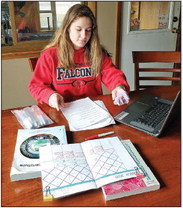Area students, teachers adapt to online learning


The sounds of laughter, lockers swinging shut and students shuffling between classes is gone. The hallways of the Abbotsford and Colby school districts are empty, their classroo...


The sounds of laughter, lockers swinging shut and students shuffling between classes is gone. The hallways of the Abbotsford and Colby school districts are empty, their classroo...